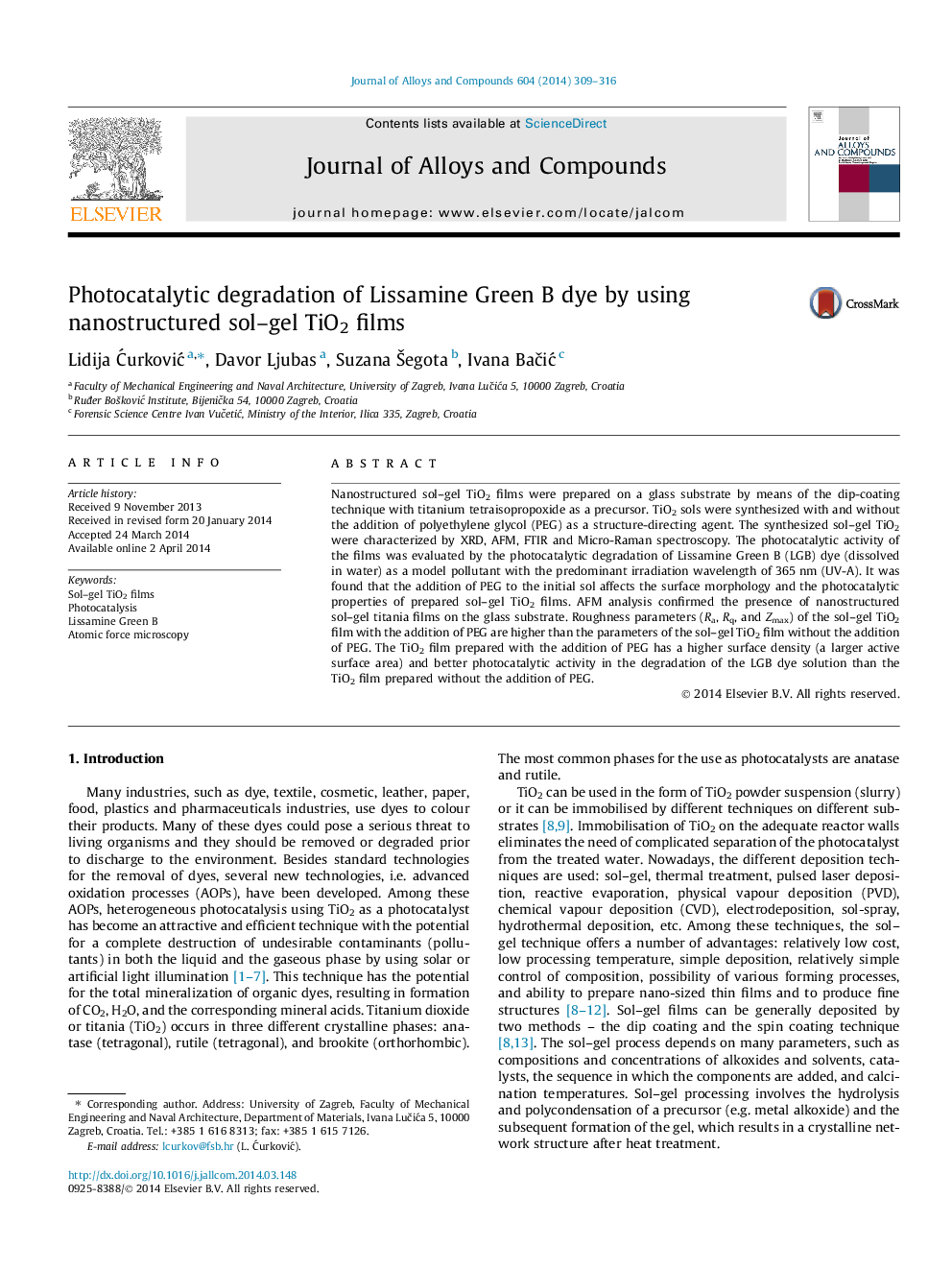| Article ID | Journal | Published Year | Pages | File Type |
|---|---|---|---|---|
| 1611129 | Journal of Alloys and Compounds | 2014 | 8 Pages |
•Nanostructured photocatalytic TiO2 films were prepared by sol–gel methods.•The addition of PEG to the TiO2 film changes the surface morphology and roughness parameters.•The addition of PEG to the initial sols increases photocatalytic properties of TiO2.•LGB water solution could be decolourised within 2 h.•The influence of photolysis and adsorption on the LGB removal from the solution is negligible.
Nanostructured sol–gel TiO2 films were prepared on a glass substrate by means of the dip-coating technique with titanium tetraisopropoxide as a precursor. TiO2 sols were synthesized with and without the addition of polyethylene glycol (PEG) as a structure-directing agent. The synthesized sol–gel TiO2 were characterized by XRD, AFM, FTIR and Micro-Raman spectroscopy. The photocatalytic activity of the films was evaluated by the photocatalytic degradation of Lissamine Green B (LGB) dye (dissolved in water) as a model pollutant with the predominant irradiation wavelength of 365 nm (UV-A). It was found that the addition of PEG to the initial sol affects the surface morphology and the photocatalytic properties of prepared sol–gel TiO2 films. AFM analysis confirmed the presence of nanostructured sol–gel titania films on the glass substrate. Roughness parameters (Ra, Rq, and Zmax) of the sol–gel TiO2 film with the addition of PEG are higher than the parameters of the sol–gel TiO2 film without the addition of PEG. The TiO2 film prepared with the addition of PEG has a higher surface density (a larger active surface area) and better photocatalytic activity in the degradation of the LGB dye solution than the TiO2 film prepared without the addition of PEG.
Graphical abstractFigure optionsDownload full-size imageDownload as PowerPoint slide
